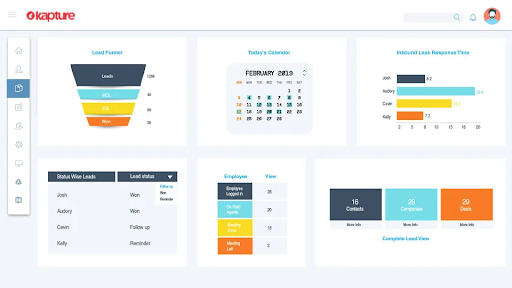“We don’t want to push our ideas onto customers, we simply want to make what they want.” -Laura Ashley
This simple phrase sums up what should be at the core of your company’s goal regarding your customers.
A Voice of the Customer program helps you to be aware of your customers’ wants and needs.
If you can design products or services that resonate with them, your sales, revenues and ultimately your bottom line will see a huge boost.
For this to happen you’ll need to be in sync with your customers throughout their journey with you and your company.
This exercise is at the heart of any successful customer experience journey.
A VoC program involves interacting with your customers for their feedback at key moments during their journey with you.
Insights gained from these interactions can help you to better understand what their needs are, what their expectations and preferences are, and how they perceive your company.
The goldmine of information gleaned from conducting such an exercise can be used to optimize your customers’ journey to make it even more meaningful and joyous.

Image source: www.crmnext.com
What is VoC?
VoC (Voice of the Customer) is a research strategy that is used by brands and companies to find out what customers are saying about a product, business, or service.
This program is the process of collating, analyzing, and acting on insights into your customers’ likes, preferences, expectations, and dislikes.
This exercise if done properly can gather insights into what’s important and meaningful for your customers in relation to your company, products, or services.
In a nutshell, a VoC program is about listening to your customers and optimizing the points identified to make your company’s customer experience a memorable one.
Benefits of a VoC program
By listening to what the customer is saying about you and your products or services you’ll be better equipped to:
- Identify early warning signs of customer distress.
- Gauge the acceptance level of new products, services and ideas.
- Customize and tweak existing products and services.
- Find solutions to problems that customers are facing.
- Build better customer relationships thus increasing customer retention.
- Enhance the overall customer experience.
Image source:www.callcentrehelper.com
Running a successful VoC program
Every business is unique from one another, but to implement a successful program there are some basic tenets that should be followed:
- Listen (collect feedback from all channels and departments)
- Interpret (analyze the collated data for actionable insights)
- Act (follow up on the insights)
- Monitor (gauge the impact of your actions)
Now that you know about the what and the why of what the program is, here are 11 best practices for the how part of planning and implementing a successful VoC program.
1. Establish a customer-centric work culture
Just telling your employees to go and conduct a VoC exercise will not do anything for your company.
You’ll first have to start work on creating a customer-centric work culture. All the senior-level executives as well as key lower-level employees will have to be on board for the program to work.
Here are a few pointers for converting your company into a customer focussed one:
- Promote active listening among your employees. Teach them to research the customers that they’re trying to help for a more in-depth customer experience.
- As stated before, emphasizing on ‘commitment to the customer’ as one of your company’s core values is a good way to promote customer-centric behaviour among your employees.
- Training your employees on not just technical skills but also people skills is also an important step in making your company customer-centric.
- Focussing and planning your company strategies by keeping your customers at the center will help to instill customer-centric behaviour among the employees.
Once the key stakeholders are in place to make the company more customer-centric, all the other employees will automatically fall into place.
2. Establish your business and research goals
Before you start your program, the vision regarding your business and your research goals needs to be clearly specified to everyone inside your company.
This will lead to a focused and clear understanding for all stakeholders of what you eventually want from the exercise.
3. Setup a strong VoC program
Once you’ve set your vision, try to create a strong program that consists of customer feedback, analysis of that feedback and a list of actionable insights gathered from that analysis.
Measures to optimize those insights can be implemented throughout the organization. And by monitoring the customer experience metrics of your company, you’ll be able to gauge the impact of those actions.
4. Set questions that will help you realize your goals
Once your organization is all prepped and set to launch the program, identifying broad questions that will drive your exercise is an important step to take.
Setting your questions with these three parameters in focus will help you to achieve the answers you’re looking for:
- What is your objective for conducting this exercise?
- What are the desired outputs for the different departments?
- What is the methodology to be used for the exercise?
Once you’ve answered these questions, setting up survey questionnaires according to your desired goals will be more focused and objective.
5. Select the data collection tool
As soon as your objectives are defined and the questionnaires are set, you’ll have to decide on the tools that will be used to collect your customer survey data.
The methods used to conduct the surveys like, online/offline interviews, emails, social media, customer survey forms, etc. will decide for you the best available resource for collecting that data.
An example of a data collection tool can be a service automation platform that can help with the customer feedback collection.
This can make your life so much simpler.
6. Collate customer feedback into a central data hub
Most organizations rely on only a few channels of communication to conduct their customer interactions and surveys.
This can be limiting on the accuracy of the insights gleaned and can lead to guesswork, which we all know leads to faulty data.
Take a leaf out of the playbook of leading brands and collect customer feedback from everywhere.
Social media comments, customer survey forms, online reviews gather as much data as you possibly can from everywhere to create a more enhanced customer experience.
7. Inter-departmental collaborations
Once you have your hands on the data generated after the exercise, let an analytical program run through it to segment it according to the criteria set by you.
Then set up a small task force consisting of employees from various departments to analyze the data and come up with optimization plans for the insights generated.
8. Voice of the employee
Focusing only on the customers’ viewpoint during such an exercise will only show half of the customer experience picture.
For a 360° view of the picture, it’s always advisable to incorporate data from employees’ feedback along with data from the customers.
This new point of view will:
- Provide context from a different perspective towards customer experience.
- Identify gaps in processes, policies and technology towards delivering positive experiences.
- Give insights into employees’ experience.
9. Integrate your customer feedback data with your other systems
Integrating your customer feedback data into your existing systems can add an extra dimension of context to your customers’ behavior which will be helpful in creating a more well-rounded picture of the customer experience.
10. Accessibility to the insights generated
Since customer experience extends to all departments for any organization, it makes sense that key stakeholders have access to insights gained after the conclusion of the exercise.
When different departments have instant access to the gaps identified, they can plan and work quickly to plug them.
This will result in your company moving towards an enhanced customer experience in a swifter and more planned manner.
11. Reporting and customer follow-up
Choose wisely while you’re planning and implementing the VoC exercise
As tempting as it sounds to get feedback from customers to improve your organization’s customer experience, it can be a tiring exercise for your customers if done on a regular basis.
Constantly filling out forms and questionnaires can get old very quickly.
Plan all of your surveys with a clear goal in mind so that you won’t have to keep bothering your customers again and again.
Choose a CRM platform for your VoC program that can manage multiple surveys at once while simultaneously catering to your whole organization.
Not listening to your customers can lead to a diminished customer experience.
Following these 11 best practices, you can run a successful VoC exercise which will benefit your whole customer base as well as your entire organization and not just a single department.
Kapture CRM can help set in motion your VoC program by automating feedback collection to save time.
Reporting and analytics features can be used to analyze and work on the feedback received from the customers.
To know more about CRMs that help businesses with feedback collection click here for a demo.
About the Author | |
 | Elvis Richard Cormuz |
| Elvis hails from Darjeeling and has had vibrant work life experiences – a musician, social worker and freelance translator/transcriber, his hobbies include music, movies and reading. | |
,
,
,
,
,
,
,
,
,
,
,
,
,









